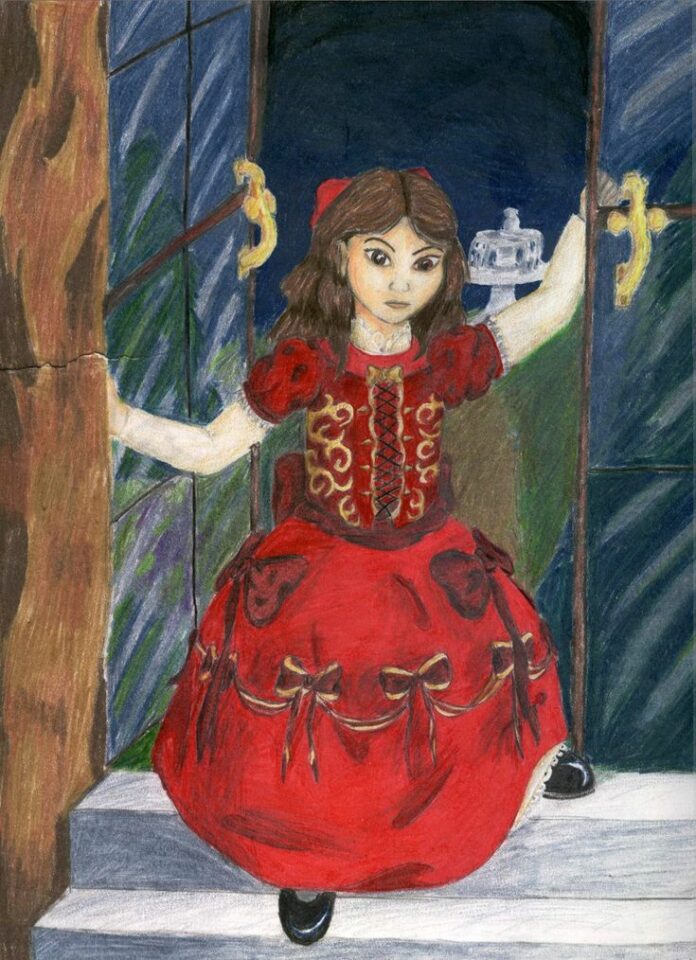In Nathaniel Hawthorne’s seminal work, “The Scarlet Letter,” the character Pearl serves as a complex emblem of sin, innocence, and the social stigma attached to her mother, Hester Prynne. This multifaceted persona invites various interpretations, particularly when depicting her through artistic mediums. The portrayal of Pearl in drawings often encapsulates these themes, simultaneously exploring notions of identity, gender, and societal norms. The artistic representation of Pearl is not merely a depiction; it reflects deeper societal trends and the evolving discourse surrounding female characters in literature.
The legacy of Pearl in artistic representations demonstrates the interplay between visual art and literary interpretation. The imagery associated with Pearl is laden with symbolic implications, offering a lens through which to examine broader societal issues such as feminism and the critique of Puritanical values. In this regard, the drawing of Pearl transcends its aesthetic appeal, engaging in a dialogue about women’s roles in both literature and society.
Understanding the Aesthetic Context of Pearl’s Representation
Interrogating the visual aesthetics surrounding Pearl’s character reveals much about the societal context in which “The Scarlet Letter” was published. Art has always been a medium through which cultural narratives are expressed, and Pearl is often rendered in a manner that enhances her ethereal and enigmatic qualities. Artists frequently utilize bright colors juxtaposed against darker backgrounds to symbolize the dichotomy of innocence and sin, thereby reflecting Pearl’s own existence as the child of sin yet imbued with a visionary wisdom.
The portrayal of Pearl can also be analyzed through the lens of Romanticism, a movement that not only emphasized emotion and individualism but also celebrated nature and the sublime. In many artistic interpretations, Pearl is depicted in natural settings, often surrounded by flora and fauna, which serves to highlight her inherent connection to nature, thereby suggesting a sense of purity and untamed spirit. This naturalistic representation also contrasts sharply with the rigid structure of Puritan society, which seeks to constrain individuality.
The anatomical choices made by artists when depicting Pearl also hold significance. Her features are often exaggerated, emphasizing her child-like innocence juxtaposed against the weight of her mother’s transgressions. This duality poses interesting questions about gender, particularly the expectations placed upon women in society. Does artistic license in portraying Pearl’s innocence serve to amplify or critique patriarchal norms?
Exploring Pearl’s Symbolism in Feminist Discourse
Artistic depictions of Pearl offer fertile ground for feminist discourse, particularly in relation to the themes of autonomy and identity. Pearl exists within a patriarchal society that seeks to define her through the lens of her mother’s sin. Consequently, her own identity becomes inextricably linked to Hester’s societal transgression, illustrating the intricate entanglement of female identities within patriarchal frameworks.
In many visual representations, Pearl is depicted as a rebellious figure, challenging the normative gender roles that her society imposes. Artists frequently highlight her defiance and spirit, often showcasing her interacting with elements of nature that signify freedom and individuality. Unlike her mother, whose identity is burdened by societal shame, Pearl embodies an unrestrained essence, arguably embodying the potential for redefining womanhood outside confines of societal expectations.
The tension between sin and innocence within Pearl’s character challenges traditional narratives of morality. Pearl serves as a reminder that women have historically been marginalized, often defined by their relationships to men or societal constructs. As such, Pearl’s representation in art can be interpreted as an assertion of female agency: a reclamation of identity that exists beyond the shadow of sin.
Art’s Role in Shaping Societal Perceptions
As artistic interpretations of Pearl proliferate, they play a hand in shaping societal perceptions of female protagonists in literature. The evolution of Pearl’s representation aligns closely with broader cultural shifts in gender equality and women’s rights movements. Over decades, these artistic renditions have evolved, accommodating contemporary feminist ideologies that advocate for women’s autonomy, agency, and value beyond traditional roles.
Analyzing historical trajectories of Pearl’s representation unveils how art serves as a barometer for societal attitudes towards femininity. In earlier representations, Pearl often appears as a victim of circumstance, a mere reflection of her mother’s choices. However, modern interpretations tend to emphasize her uniqueness and individuality, embodying a force that defies societal expectations. This evolution in portrayal aligns with contemporary movements advocating for the empowerment and voices of women, thus illustrating the significant role of art in advancing feminist ideology.
Furthermore, the artistic portrayal of Pearl can be considered a microcosm of the broader cultural reflections surrounding women. The transition from seeing Pearl as a symbol of shame to an emblem of empowerment signifies a cultural awakening. This shift invites academic scrutiny of how visual representations can bolster or dismantle patriarchal narratives, shaping our understanding of women’s roles in literature and society.
Conclusion: The Lasting Impact of Pearl’s Artistic Representations
In summation, the artistic representation of Pearl in “The Scarlet Letter” offers a rich tapestry through which to analyze the interplay of literature, gender, and societal values. Pearl remains a complex and evocative figure, laden with implications that challenge traditional understandings of female identity. By situating her representations within a feminist framework, one may appreciate not only the aesthetic beauty of such renditions but also their deeper significance in the ongoing discourse surrounding women and society.
In the ever-evolving narrative of female empowerment, Pearl stands as both a product of her time and a beacon for future discussions. Her journey through art symbolizes the mutable nature of female identity—unconfined, ever-evolving, and fundamentally intertwined with the larger currents of cultural transformation. Through understanding the nuanced perspectives on Pearl, we engage with larger themes of autonomy and agency, reinforcing the necessity of inclusive narratives that transcend historical confines.





























